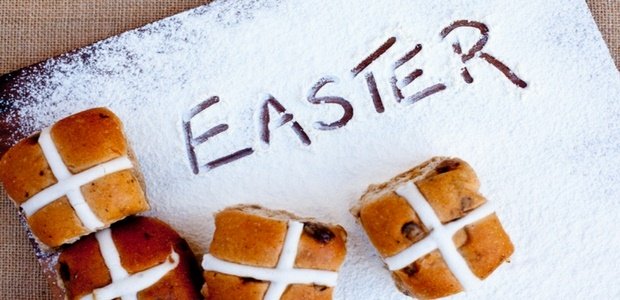Images: iStock
ALSO READ: 25 Recipes that will instantly take the strain and stress out of your Easter lunch planning
When we sit down this weekend at our family table, most of us will be sharing dishes that we look forward to year after year. It’s quite a beautiful thought that our grandmothers and their grandmothers may have passed down a recipe down through hundreds of years of generations.
We eat lamb, eggs and very specific baked goods, by why?
Lamb
Leg of lamb, roasted lamb, lamb chops and braised lamb have all been set on the Easter table for centuries. Historically, it’s possible that sheep were the only available livestock in abundance after a long winter, but the tradition goes deeper.
Lamb is said to represent the 3000-year-old biblical story of the Egyptian plagues, the final plague, the death of all first-born boys. Sparing the lives of their firstborn, Jewish people painted doorposts red with blood so God could pass over their houses. From then, lamb was eaten on the Jewish holiday of Pesach to represent the protection of a chosen people.
As the history of Christianity derives from the old testament, Jews that converted to the teachings of Christ, kept their tradition of eating lamb for Easter.
Eggs
As a long-standing symbol of rebirth and fertility, eggs have become synonymous with Easter celebrations. Before Christianity, pagans would observe the equinox with eggs as a symbol of rejuvenation of life, mimicking nature’s change in season from winter to spring.
For rebirth, eggs can represent the resurrection of Christ as well. As the New Testament and its biblical stories take place in the northern hemisphere, Easter would be celebrated in conjunction with the coming of a new season of booming baby animals and the blooming of flowers.
Hot cross buns
There’s no one explanation as to why we eat hot cross buns around the world for Easter. The tale of these iconic bread buns had been ongoing long before Christianity and simply developed through time as a special occasion treat.
The cross on the bun is said to have been placed there by a 13th-century monk on Good Friday. It was sung about, recorded in Irish history, about 300 years later. Then, Queen Elizabeth I, in 1592, decreed that hot cross buns should only be sold on Easter, Christmas and burials and those found baking the buns at home would have to give them up immediately.
Today, hot cross buns are everywhere and can be found in every form, like ice creams, cakes, bread and cupcakes.
ALSO READ: Transform your hot cross buns into 8 modern and moreish desserts
Dyed eggs
It’s clear that eggs have had a symbolic history of humankind since the beginning of civilization. While the decorating of eggs for early Christians was an activity they’d been exposed to before a change in beliefs, the meaning and intricacies had changed to encompass Christianity.
Vividly representing the blood of Christ on the cross, eggs were soaked in red dye. This still happens today in Orthodox and Eastern Catholic churches. As a rise in the observation of Lent continued, certain sects of Christianity would avoid eating eggs as a lead up to Easter, but chickens would continue producing, hard boiling the eggs would preserve them and also be a canvas.
This painting of eggs evolved in Eastern Europe to display impressive intricate patterns and colours. As with most holidays, the origins of dying eggs has expanded to include plastic and chocolate covered eggs.
Simnel cake
As the allegory goes, two boys were baking a cake for Mothering Day (somewhat of a precursor to modern-day Mother’s Day) and couldn’t decide on how the recipe should go. One boy insisted on boiled, the other baked, and from then on they created a new double effort dish that would appear during the festive season for the next thousand years. While the boys apparently had a great falling-out, their legendary cake remained.
In relationship to Easter, this costly cake was only made on important days of the year; it included marzipan made from almonds. Simnel cake can be found as a staple Easter dessert in many English, Irish and South African homes. Small balls of marzipan sit atop the simnel cake representing the Apostles of Jesus (excluding Judas).
ALSO READ: 11 Show-stopping recipes for an epic Easter

